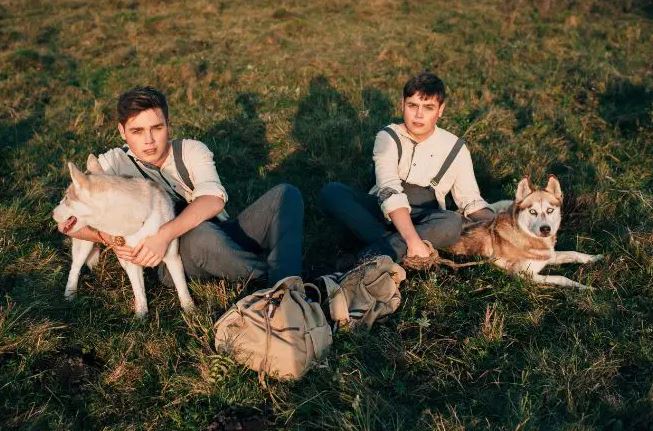The sheer joy on the faces of these twin babies, as they giggle at a tiny Pomeranian pup, is truly infectious. It's undeniable how dogs, being our faithful companions, have a remarkable ability to lift our spirits, even during tough times.
The shared moments of happiness between these babies and the adorable pup serve as a reminder of the heartwarming bond we share with our furry friends. Their contagious smiles bring us endless joy and gratitude.
Are dogs easily confused by twins?
Dog owners are well aware of their pets' remarkable ability to differentiate between people, even when they bear a striking resemblance. This raises the question: do dogs get confused when it comes to twins?

The answer to this question is a mix of yes and no. Dogs possess a highly developed sense of smell, which they utilize to distinguish between individuals. Twins typically have distinct scents, even if they have a similar appearance, enabling dogs to differentiate between them.
However, there are certain situations where twins may share a scent, and in such cases, dogs may face difficulty distinguishing between them. Nevertheless, it seems that, more often than not, dogs are able to tell twins apart.
By what means do dogs differentiate between twins?
When it comes to distinguishing between twins, dogs employ various tactics. Firstly, they rely on visual cues such as hair color, length, clothing choices, and even body posture to differentiate between the twins. If the twins share similar appearances in terms of attire or hairstyle, the dog may focus on other distinguishing characteristics like height, weight, or facial features.

Secondly, dogs utilize their remarkable sense of smell to differentiate between the twins. Each individual emits a unique scent, and even identical twins possess slight variations in their body chemistry, enabling dogs to discern between them through olfactory cues.
Lastly, dogs observe and analyze behavioral cues to tell twins apart. One twin might display more outgoing or affectionate behavior, or they may exhibit different interests and preferences. Dogs keenly observe these behavioral disparities to distinguish between twins.
In conclusion, dogs employ a combination of visual, olfactory, and behavioral cues to tell twins apart, enabling them to recognize the twins even if they dress alike or have similar hairstyles.
Are dogs capable of having twins?
Despite common misconceptions, identical twins are not frequently observed among dogs. While dogs are typically born in a litter and may share resemblances, it is a common misconception to assume that identical twins are commonplace among puppies. In truth, twins denote the birth of two offspring resulting from a single pregnancy.

Identical twins, also known as identical monozygotic (IM) or monochorionic (MC) twins, originate from two fertilized eggs that divide and develop simultaneously in the uterus, each growing into an individual puppy.
On the other hand, fraternal twins result from the fertilization of two eggs by two different sperm cells, and these embryos develop concurrently in the womb.
While fraternal twins are more frequently observed in dogs compared to identical twins, both types remain relatively rare. So, the next time you come across a litter of puppies that resemble each other, it should not be surprising to find out that one or two of them are indeed twins!
Watching the video below:






